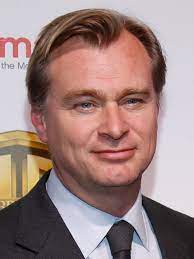The pleasures of owning physical media have again caught our attention.

In 2015 this site offered a piece entitled “Are We Done Collecting? It’s simple conclusion was that people would rather stream or rent media materials rather than own them. My impression is that in the last few years this has begun to change, as the technologies of music reproduction and film production have created more interest in younger consumers. The signs are decidedly mixed, but older means of capturing sight and sound seem to have found a lot of younger enthusiasts. Film preservation has become a cause that museums and Hollywood are rallying behind, aided by passionate cineastes in the thrall of directors like Brady Corbet or Yorgos Lanthimos, or Christopher Nolan, who keeps surprising viewers with epics like Oppenheimer. In addition, studio interest in their own neglected back catalogues seems to have increased. Their indifference a few years ago reaped a ton of bad publicity, with the result that new editions of old classics are now often restored on high resolution DVDs. The classics-centered Criterion Collection seems to be referenced everywhere now. Perhaps the relatively new Hollywood Museum on North Highland Avenue has also focused more attention on the physical aspects of filmmaking.
A few years ago 35-millmenter film seemed to be firmly in the rear-view mirror. But new applications for old color and aspect ratios have sparked a minor revival for the nearly moribund Eastman Kodak. Older directors Martin Scorsese and George Lucas have put their reputations on the line to support restoring films with new prints. While digital projectors still are the rule in theaters, productions again welcome the use of film during production before being transferred to a final digital print.
The same story of a partial turnaround applies to vinyl records, which are making a modest comeback. Streaming glitches and higher costs of monthly subscriptions have added value to owning the real thing. Based on record sales, in 2015 I predicted “a fading passion” for holding a physical copy of a performance. Now newer sales charts that show an uptick of interest by young collectors in these physical artifacts of music.
 As well, storied brands of old audio and photo equipment from the 70s and 80s have also become a thing. Used audio stores could be lonely places for a few nostalgic old men. Now, some stores can hardly keep up with the demand for used audio amplifiers, some made over 50 years ago. A restored off-the shelf Kenwood Amplifier from the early 70s can sell for as much as $4,000.
As well, storied brands of old audio and photo equipment from the 70s and 80s have also become a thing. Used audio stores could be lonely places for a few nostalgic old men. Now, some stores can hardly keep up with the demand for used audio amplifiers, some made over 50 years ago. A restored off-the shelf Kenwood Amplifier from the early 70s can sell for as much as $4,000.
Perhaps living exclusively in the digital world of streaming has perhaps worn us out. Streaming offers something less than a “thing” that comes with a history and lovingly prepared liner notes. Taylor Swift enthusiasts famously want more than a digital file. And while most film buffs have no practical use for the 600-pound 70-mm IMAX print of Oppenheimer (2023), many want the Blu-ray equivalent. Acquiring a sensibility that is distinctly theirs, young media consumers have also taken up the cause for once-esoteric phonograph cartridges, 4K restorations of films of 50s films, and the discovery of all-but-forgotten film formats like VistaVision, the format chosen by Bradley Corbet for his low-budget-high-impact feature, The Brutalist (2024).
![]()


